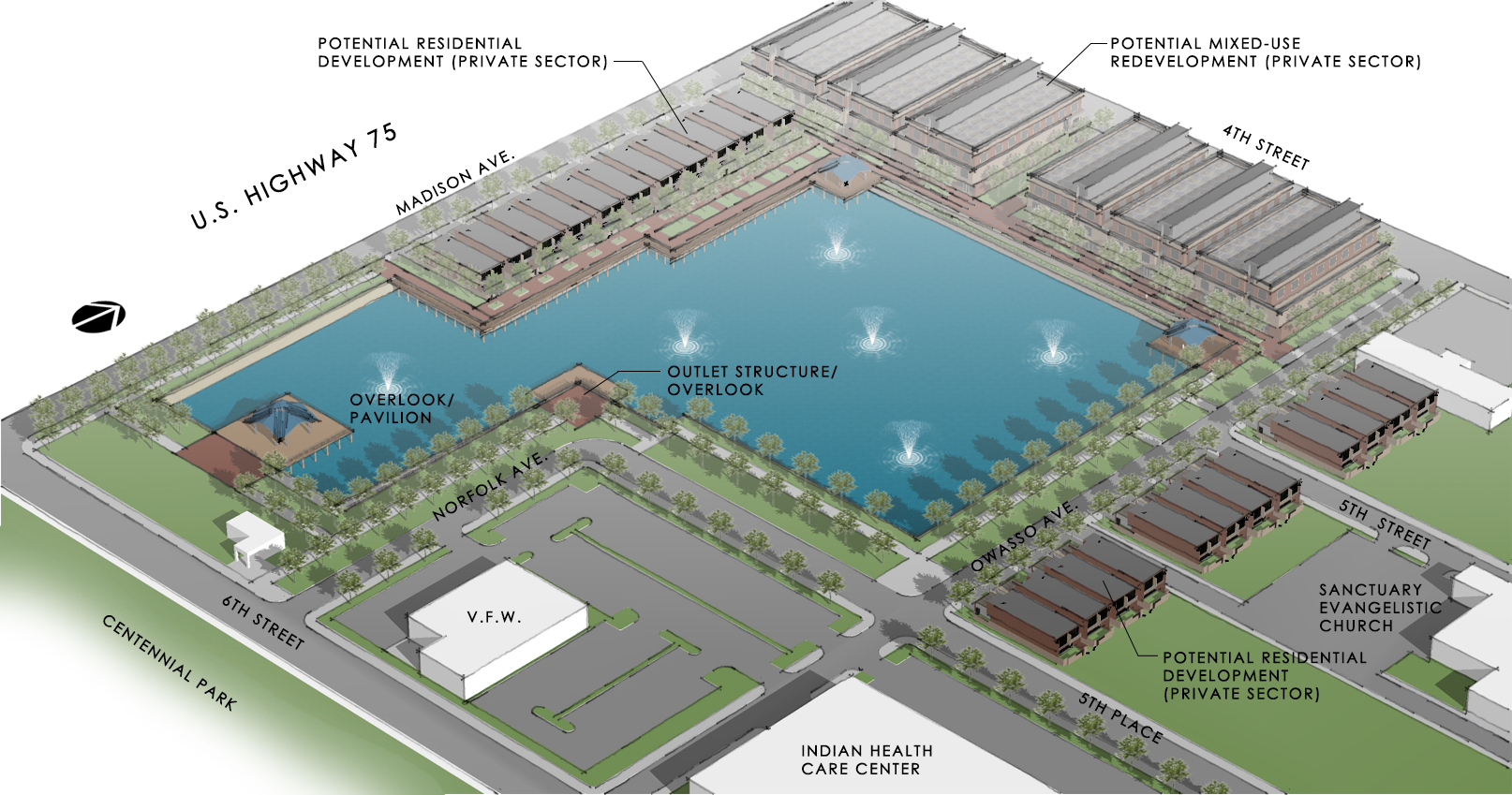Tulsa City Hall: September 2019 Archives
Maybe the Tulsa County Sheriff's Office and the Tulsa Police Department should have a more formal basis for making enforcement decisions than viral news stories.
This September 19, 2019, NBC News story about the City of Fort Collins, Colorado, dropping appeals to a challenge to their public nudity ordinance seems to have prompted legal discussions at Tulsa City Hall and the Tulsa County Sheriff's Office.
On September 25, 2019, KOTV's Lori Fullbright posted a preview of a story that declared that Tulsa officials had decided not to enforce our state and local public nudity laws and that fairgoers could be topless as well.
Tonight, Fullbright had conflicting statements from Tulsa County Sheriff Vic Regalado, who decided that he won't be enforcing Oklahoma's public nudity laws and the City of Tulsa, first announcing that public nudity laws would not be enforced, and then reversing course.
I saw several reports on social media of topless women near the Fairgrounds, and I had a sighting myself, around 7 pm tonight -- a woman in jean shorts and flip flops, and nothing else, walking down Yale Avenue past Memorial Baptist Church.
All of the confusion might have been averted if our city and county officials had bothered to consult the actual court records, which took me a few minutes to locate online. (Tenth Circuit opinions are here. Eighth Circuit opinions are here. Dockets and filings in federal district and appeals court cases can be found at the US Courts PACER website, for which registration is required.) It would also help if our local officials had the courage to recognize and resist federal rulings that amount to legislation from the bench.
No final ruling has been issued by any federal judge on the constitutionality of the Fort Collins city ordinance, and no ruling will be issued. The plaintiffs asked for a preliminary injunction to prevent Fort Collins from enforcing the law while the case was pending, and Federal District Judge R. Brooke Jackson, a Harvard Law grad and Obama appointee, granted it. The City of Fort Collins appealed the injunction, but a bare 2-1 majority of a three-judge 10th Circuit panel upheld the injunction and remanded the case back to the District Court. The City of Fort Collins entered a stipulation that made the District Judge's injunction permanent, and the case was terminated.
Here is the case summary from the panel's majority opinion (emphasis added):
The city of Fort Collins, Colorado, enacted a public-nudity ordinance that imposes no restrictions on male toplessness but prohibits women from baring their breasts below the areola. See Fort Collins, Colo., Mun. Code § 17-142 (2015). In response, Free the Nipple, an unincorporated association, and two individuals, Brittiany Hoagland and Samantha Six (collectively, "the Plaintiffs"), sued the City in federal district court. They alleged (among other things) that the ordinance violated the Equal Protection Clause, U.S. Const. amend. XIV, § 1, and they asked for a preliminary injunction to halt enforcement of the ordinance. The district court agreed. It enjoined the City, pending the resolution of the case's merits, from implementing the ordinance "to the extent that it prohibits women, but not men, from knowingly exposing their breasts in public." Free the Nipple-Fort Collins v. City of Fort Collins, 237 F. Supp. 3d 1126, 1135 (D. Colo. 2017). The City then brought this interlocutory appeal to challenge the injunction.The appeal presents a narrow question: Did the district court reversibly err in issuing the preliminary injunction? We answer no. Exercising interlocutory jurisdiction under 28 U.S.C. § 1292(a)(1), we affirm the district court's judgment and remand the case to that court for further proceedings consistent with this opinion.
The majority opinion was written by Gregory Phillips, an Obama appointee. He was joined in his opinion by a Clinton appointee, Mary Beck Briscoe.
Harris Hartz, a George W. Bush appointee, wrote a dissenting opinion, attacking the plaintiff's objection that the law enshrines culturally-conditioned stereotypes that have no scientific basis.
Further, even if notions of the erotic are purely culturally based, it is unclear why that is relevant to the validity of indecency laws. The purpose of those laws is to reduce antisocial behavior. Such laws must deal with the real world. Legislation itself is rational even if the behavior it attempts to control is irrational (such as sexual assault purportedly caused by objectification of the female body). What would be the state of society if legislation could control only rational behavior? A regulation designed to reduce the antisocial effects of irrational thinking does not constitute an endorsement of that irrational thinking. Are laws regulating pornography and obscenity invalid if the societal harms they are intended to prevent are caused by cultural influences rather than purely biological ones? The only assumption about men and women underlying the Ordinance is that because of the erotic potential of female breasts, their public exposure will induce misconduct.
Earlier today, Oklahoma Attorney General Mike Hunter weighed in on the matter, pointing out that other Federal courts had upheld similar laws:
"The Tenth Circuit's preliminary decision in the Fort Collins case - a case that has now ended without a full adjudication - does not change local and state laws in Oklahoma on the subject," Hunter said in a statement.The city of Fort Collins declined to appeal the ruling to the U.S. Supreme Court....
Hunter said the 10th Circuit's ruling is out of line with most court rulings on the topic.
"The majority of courts around the country that have examined this issue have upheld traditional public decency and public nudity laws," Hunter said. "These courts have recognized that states and political subdivisions have a legitimate interest in prohibiting public nudity as traditionally defined."...
Oklahoma City's public indecency rules ban women from going topless in public.
A spokeswoman for Oklahoma City police said the appellate court's ruling is specific to Fort Collins, Colorado and does not apply in Oklahoma. City police will continue to enforce public indecency laws as outlined by state law and city ordinance, said police Sgt. Megan Morgan.
"Someone in OKC who is in violation of the law could be cited and/or jailed as this is a misdemeanor crime," she said.
One contemporaneous example is a case (Case No. 15-3467-CV-S-B) brought against Springfield, Missouri, by the local chapter of Free the Nipple, with the help of the state chapter of the ACLU. The case was heard by Beth Phillips, Chief Judge of the United States District Court for the Western District of Missouri, an Obama appointee. Springfield tightened its public nudity ordinance in September 2015. FTN filed a suit the following month. Springfield modified its ordinance in March 2016. FTN amended its complaint to challenge the revised ordinance. The 2016 ordinance was upheld by Judge Phillips, then upheld on appeal in July 2019 by a unanimous three-judge panel in the Eighth Circuit Court of Appeals: Chief Judge Lavenski Smith and William Duane Benton, appointed by George W. Bush, and David Stras, appointed by Donald Trump. You can read the appeals court ruling in Free the Nipple v. Springfield here. The court cited Ways v. City of Lincoln, issued in 2003, as precedent and wrote:
Springfield's ordinance is substantially related to its important governmental interests in promoting public decency and proscribing public nudity to protect morals, public order, health, and safety.
The injunction of the 10th Circuit panel is an attack on the right of American communities to govern themselves. It is an effort to impose San Francisco's perverted moral notions on Sallisaw.
I am reminded that this is the sort of outcome that Phyllis Schlafly warned would occur if we ratified the Equal Rights Amendment. ERA opponents warned that ratifying the ERA would abolish the right of the American people, through their elected representatives, to draw distinctions between men and women where appropriate. And so the ERA fell short of the required number of states for ratification, despite Congress extending the original ratification period. Nevertheless, the unaccountable federal courts have chosen to impose their moral vision on the people of the United States, implementing the ERA through the back door of judicial activism.
The Eighth Circuit now has 11 judges appointed by Republicans and only one appointed by a Democrat, Barack Obama. The Tenth Circuit has seven Democrat-appointed judges and five Republican-appointed judges. I can think of two Tenth Circuit judges and a Colorado federal district judge that need to be impeached.
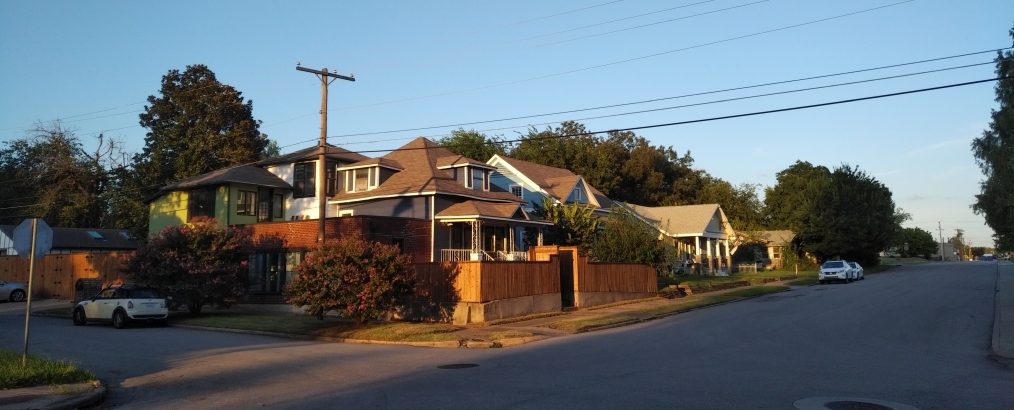
I had to be downtown last night, and I decided to go for a walk. On a whim, I walked under the east leg of the IDL to Paul Harvey's old neighborhood, which the City of Tulsa is acquiring, lot by lot, house by house, to convert to a stormwater detention pond.
I took some pictures along Madison Avenue, and then on 5th Place. I noticed that several homes were well cared for and recently updated. I also noticed that the city had already placed a metal sign in each of several vacant lots that they had already purchased, declaring each lot a STORMWATER MANAGEMENT FACILITY.
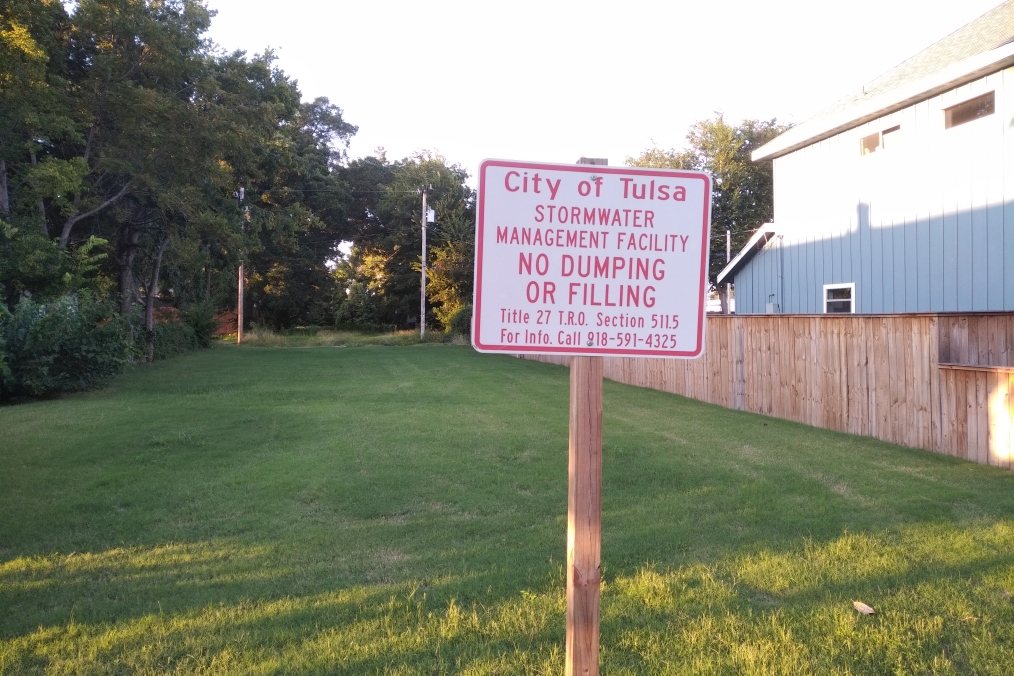
While I was in the neighborhood, I had the chance to chat with the Dawsons, the family whose home has been condemned by the city for the planned Elm Creek West Pond. Their investment in improving their new home, inside and out, was evident. Before they moved in, the house had been used to store restaurant equipment.
At the moment, it appears that only a couple of homes are in the condemnation process. My guess is that the city was pursuing a strategy of picking off one home at a time in order to avoid mobilizing the neighborhood to organize.
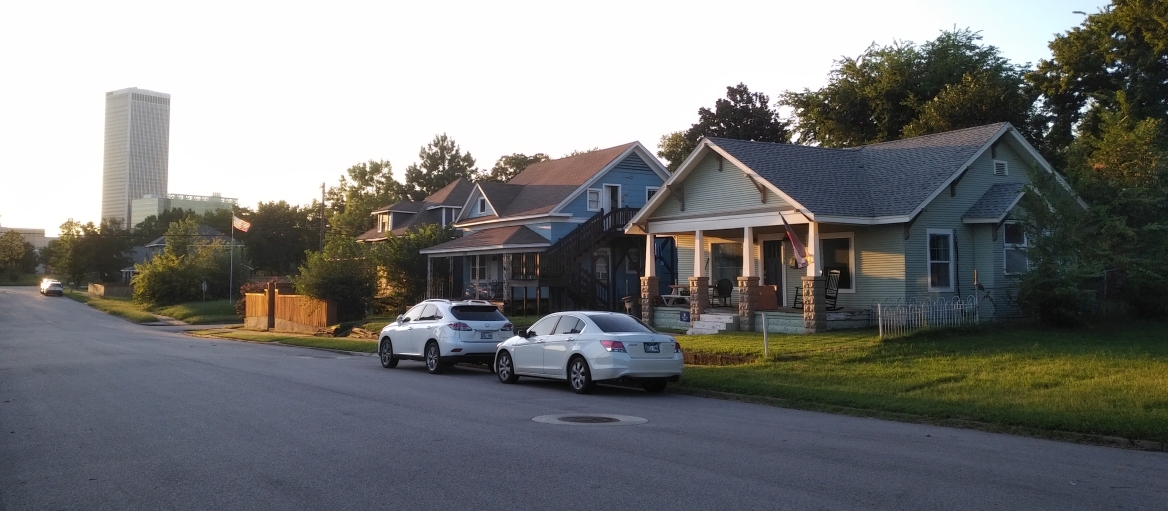
The Elm Creek West Pond is a zombie project. Bureaucratic inertia is at work. At some point in the past, the project was deemed worthwhile and was added to a list of capital improvements, at which point it went into hibernation. When the funding finally arrived, after over a decade, it lurched back to life, without any reexamination or reconsideration. Is it still necessary? Is it still the best way to accomplish the goal?
From Engineering Services' perspective, they're just following a plan. The people responsible for adjusting the plan to changing circumstances, the City Council, just sits there and nods.
The City Council has the power to stop this zombie. The City Council has the power to put land acquisition on pause while the necessity of the project is reviewed and alternatives are considered.
In reply to a Preserve Midtown Facebook post about this situation, Amanda DeCort, executive director of the Tulsa Foundation for Architecture, wrote:
Ye Olde Unfunded Stormwater Project has been keeping the residential areas in the Pearl District down for 20 years. Neighborhood de-stabilization. And still no funding. Ridiculous. It's a shame the City won't rethink this. Hard to believe there's not another patch of dirt to put a pond on.
Some questions that ought to be asked before this project is allowed to proceed any further:
- How much property damage would be averted in a 100-year-rainfall event if this pond is built? Would it be cheaper just to pay for repairs if a flood occurs?
- Are there more localized improvements that could protect particularly vulnerable or valuable buildings? For example, the SpiritBank (originally Mapco) building at 18th and Baltimore has a large vacant area just upstream, to the north across 18th St, that could be used for stormwater retention. And I can't help but notice a great deal of unusable open space in the shadow of the the southeast interchange of the Inner Dispersal Loop.
- How many acre-feet of additional storage is really needed, given the capacity of the Centennial Park lake and other changes in the watershed since the original study was done 30 years ago?
- Wouldn't it be better for minimizing stormwater runoff if we kept the single family homes, each with a yard that can soak up rainfall, rather than replace them with the high-density, no-open-space development shown in the artist's conception of the pond?
- How much improvement could be obtained by funding the replacement of impermeable parking lots -- like the big ones surrounding the Indian Health Care Resource Center (IHCRC) and VFW buildings -- with permeable paving solutions.
- Why not use the large chunks of already vacant land in the neighborhood to build smaller detention ponds, rather than demolish more homes? For example, 2/3rds of the block northeast of 5th Pl and Owasso is an unpaved grassy lot -- some of it owned by the City of Tulsa, some by the IHCRC. Another large grassy lot stands northeast of 5th Street and Owasso, owned by IHCRC. That's enough land to make up for the homes that would not have to be acquired -- assuming all that storage capacity is truly required.
After gathering all of the information, the City Council has the discretion to weigh competing concerns against each other. Even if the entirety of the engineer-decreed stormwater capacity can't be obtained through alternative means, it's OK for the Council to decide that the residual flooding risk is more acceptable than the loss of a neighborhood.
Protecting the remaining historic homes in the neighborhood, guaranteeing these urban pioneers the stability they need to invest further in their properties, reweaving the urban fabric that connects the East Village to the 6th Street corridor, the new Studio District, Whittier Square, and the TU campus -- these are goals that ought to outweigh marginal improvements in stormwater capacity.
Councilor McKee, come out to 5th Place and meet with these homeowners. Bring some council colleagues along, then see for yourselves what they've done to renovate their homes. Listen to their vision for the future of their neighborhood. Then call a halt while there's still time.
MORE LINKS:
April 7, 2016, agenda for the Tulsa Development Authority, noting receipt of "Elm Creek/6th Street Drainage Detention and Conveyance Plan" from Roger Acebo. (The executive session was to include a discussion with counsel concerning the Redevelopment Agreement dated June 30, 1986, between the University Center at Tulsa and the Tulsa Development Authority. It was under this agreement that TDA acquired and razed the Near Northside neighborhood for future campus expansion that will never happen.)
September 1, 2016, report from Roger Acebo to the TDA regarding the 6th St. Infill Acquisition/Relocation Plan. The report provides this summary of the project. Note that the listed funds are barely enough to acquire the "interested owner parcels," much less all 153, and that leaves no money for actually building the pond.
- Acquisition of properties are considered voluntary in nature.
- There are not enough available funding to purchase all 153 parcels in the two locations (West Pond / East Pond concept); therefore, acquisitions are occurring as property owners express interest through responses from direct mailings and/or telephone contact.
- 23 properties are under City ownership at the two locations.
- 24 properties are actively being processed for acquisition consideration due to owner interest.
- 106 properties not being processed due lack of full funding, not ready to sell, or apparent lack of interest.
- Expenditures for this project shall be paid out of previously identified and associated City sales tax:
- Improve Our Tulsa (6014-5451101-040522-148150) balance - $974,150.00
- 2006 Street Package (063106) balance - $1,325,178.00
- Current estimated acquisition costs of the 24 interested owner parcels: $1,380,085.00.
Here's Roger Acebo's June 1, 2017, update to TDA, dealing specifically with the acquisition of the bus garage NW of 5th St. and Owasso Ave. from Wiltom Enterprises.
- Acquisitions are being conducted as voluntary in nature.
- All acquired properties will eventually be incorporated into a flood management design or future redevelopment project by TDA on behalf of the City.
- 153 total parcels are identified in plan area. Of these:
- 119 parcels are not being processed either due to lack of full funding, not ready to sell, or apparent lack of interest.
- 23 parcels are under City ownership at the West pond and East pond locations.
- 1 additional property owners have shown interest in selling.
- 10 parcels have now been acquired by TDA.
- 1 home to be scheduled for demolition.
- Of 6 tenants in acquired properties:
- 5 have been relocated
The City Council recently dealt with another condemnation on the same block, a renovated home with a separate apartment at 1408 E. 5th Street. The final pages have a screenshot of a "Project Expense Inquiry" which shows project 148150: Pearl District Flood Control as having a budget of $4,383,276.43, with $1,261,207.05 already spent as of July 29, 2019. Why spend the money to acquire land if you don't have money to build the project?
Note that in 2016 and 2017, acquisitions were "being conducted as voluntary in nature." When did the switch get flipped to compulsory acquisition?
A stormwater detention pond planned by the City of Tulsa is displacing owners of historic homes, affecting the western part of what is today known as the Pearl District. One of the property owners, now in the midst of a judicial condemnation process, has been trying to gain public attention for his neighborhood's plight. News on 6 had a story on the issue last Thursday.
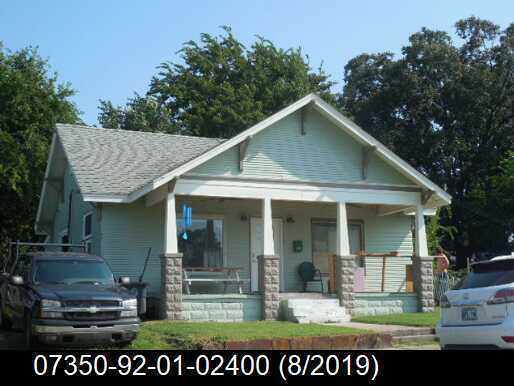
John and Tara Dawson bought the home at 1111 E. 5th Pl., in the Central Park Place subdivision, on June 21, 2018, for $65,000, according to Tulsa County Assessor records. Photos on that assessor's property page indicate a considerable amount of recent renovation, both completed and ongoing, including the addition of a loft. The home was built in 1903.
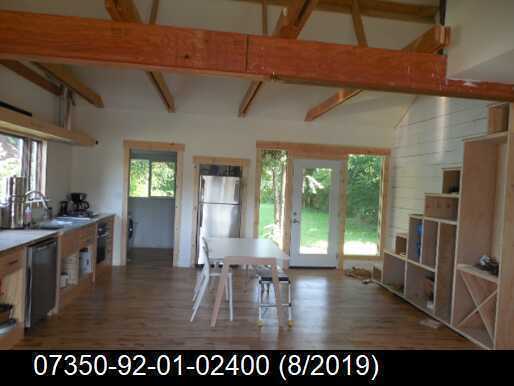
The Tulsa City Council voted to condemn the Dawsons' home on July 10, 2019, as one of a group of six items that received almost no comment. Chairman Phil Lakin declined to read the list of items, and only one of the items, involving a Zarrow Foundation donation for a deputy police chief to tour psychiatric emergency room facilities in Arizona, received any comment. The condemnation passed unanimously, with the support of District 4 Councilor Kara Joy McKee. The whole process took about 90 seconds.
At the Urban and Economic Development Committee on June 26, 2019, City Director of Engineering Services Paul Zachary stated that the Dawsons bought the property shortly after the city sent "Notice of Interest and Opportunity" letters to property owners in June 2018, and that the former property owners did not inform the city of the property transfer. The Dawsons' purchase price was the same as the city's offer to the previous owners. A city review appraisal did not modify their estimate of market value. According to Zachary, the property owner refused to meet with the city to discuss the offer in January, declined the offer in February, stating that it was too low, but refused to present a counteroffer, and had not responded to the final offer in April. The backup material for this agenda item lists the contacts between the city and the owner. (Meeting agenda is here.)
Councilor McKee's response at that meeting suggested that she wasn't familiar with this major project within her district's boundaries. The question that needed to be asked, but wasn't asked by the incurious rubber-stampers that currently sit on our City Council, was whether the detention pond was actually necessary.
The planned detention pond is part of the Elm Creek Basin Stormwater Management Plan, one of the many such plans drawn up in the wake of the 1984 Memorial Day flood. The Elm Creek basin includes most of the Pearl District and the southwestern part of the Kendall-Whittier neighborhood. Elm Creek flows in an underground tunnel between the western end of Centennial Park lake, under the Gunboat Park neighborhood, west of the 18th and Boston area, through Veterans Park, emptying into the Arkansas River just south of the 21st Street bridge. Despite receiving 12 inches of rain in 8 hours, flooding along Elm Creek was minimal (USGS has a map of the areas flooded in 1984) compared to that experienced along Mingo Creek and its tributaries, in parts of Brookside, and along the Sand Springs Line west of downtown. The ancient Elm Creek drainage system had done its job.
The Centennial Park lake was built as part of that post-1984 plan, but the plan had been modified for the sake of aesthetics. The original plan called for Centennial Park to be replaced by a deep, steep-sided detention basin, unusable for recreation. Rather than completely eliminating the park for a large, shapeless stormwater facility, a new community center was constructed, and the lake was landscaped, creating a beautiful place to walk and a lovely foreground for views of the downtown skyline. (The history of the Elm Creek Master Drainage Plan is discussed beginning on page 27 of the amended 6th Street / Pearl District Infill Plan.) Under the revised plan, two smaller ponds would be added to handle the remaining capacity determined by the hydrologists, one pond north of 6th Street and one southeast of 6th and Peoria.
Elm Creek has not been a high priority for stormwater mitigation. In February 2013, a PowerPoint presentation by City of Tulsa Engineering Services identified the Joe Creek 47th Street relief line near Evanston Ave. and Perryman Ditch (Rockford Ave. north of I-44) as highest priorities for funding. A heat map of stormwater complaints had most of the Elm Creek basin in an area coded for 0-5 complaints per square mile over a five-year period. A list of repetitive loss areas, compiled in 2017, identified only two in the Elm Creek basin: A triangle of land upstream from the Katy tracks between 4th Place, Rockford and Troost Avenues (11 paid damage claims, totalling $205,075 over 40 years), and six properties northwest of 8th Street and Wheeling Avenue (six paid damage claims, totalling $68,471 over 40 years). Neither situation is likely to be improved by this Elm Creek West Pond, which is on a different tributary of the creek. None of the paid claims listed occurred since the construction of the Centennial Park lake or improvements to storm sewers in the basin. None of the Elm Creek basin is within any FEMA flood zone, but a narrow band along the path of the creek is within the City's regulatory flood plain (see plate 36 and plate 37, or see the interactive Tulsa Regulatory Floodplain Map here)
In previous years, the City of Tulsa attempted to get funding from the Federal Emergency Management Agency (FEMA) for the project. The city submitted a request for funding on August 8, 2011, which was denied by FEMA on November 20, 2012, "citing deficiencies in the SOW, engineering feasibility and effectiveness, cost estimate, NEPA compliance and project eligibility." FEMA received an appeal on March 28, 2013, and denied it on August 27, 2013. Tulsa submitted a second-level appeal on November 19, 2013. FEMA Headquarters reviewed the appeal and sent a final denial letter on July 14, 2014, stating:
Benefit Cost Analysis - FEMA Headquarters performed a reevaluation of the Benefit Cost Analysis to determine the validity of what was submitted by the applicant. Our reevaluation, using all of the inputs provided by the applicant, indicates that total benefits derived from protection of the 31 structures is $27,446,627. With a total project cost of $9.95M, the resulting BCR is 2.76. However, a closer review of the data indicates that the applicant is subscribing too many benefits to the structure located at 1802 S. Baltimore Ave. The assumptions pertaining to a complete shutdown of this structure during a flood event and the loss of use for an extended period of time cannot be substantiated or supported. The structure located at 1802 S. Baltimore Ave. provides $24.13M in benefits while the project as a whole yields $27.45M in benefits which accounts for 88.0% of total project benefits. FEMA's reevaluation of the BCA yields a benefit cost ratio (BCR) of 0.33 demonstrating that this project is not cost-effective....The project will remove less than half of the structures from the 100 year floodplain and the benefits would accrue to primarily one structure. Given that one structure (1802 S. Baltimore Ave, a 10-story bank building [owned by Spirit Bank]) is providing the bulk of the benefits for this project, it may be more feasible and cost effective to merely provide some type of floodproofing mitigation for this single structure.
I note that there is nearly a full city block of vacant land and surface parking just north of the Spirit Bank building which could be turned into storm water detention, probably at considerably less expense. John Neas proposed bringing Elm Creek to the surface in this area back in 1991.
Funding for the Elm Creek project was included in the 2013 "Improve Our Tulsa" sales tax and bond issue package, under the heading of Planning & Economic Development: "Phase I Pearl District Flood Control and Redevelopment - $5,000,000." That appears to be the source of funding for this acquisition.
The Alaback Design website shows the concept for the Elm Creek West Pond's development: Five city blocks cleared away for the pond itself and for high end mixed-use and residential redevelopment on the periphery. It's hard for me to understand how a pond that is only needed to hold water during a hundred-year flood would be brim-full as depicted.
Included in the pond's footprint is the childhood home of legendary broadcaster Paul Harvey at 1014 E. 5th Place, a 2212 sq. ft. house with first and second floor porches, built in 1920.
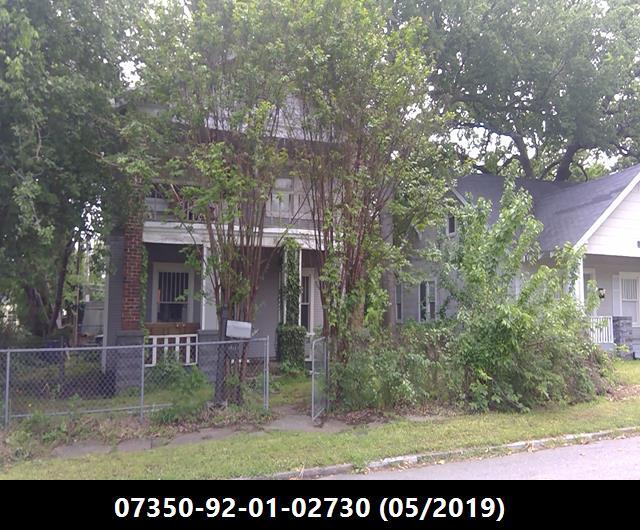
His mother, Anna Aurandt, the widow of Harry Aurandt, who was murdered by armed robbers in 1921, continued to live in the home for decades. A poignant ad in the December 13, 1922, Tulsa World, announces: "WILL SHARE my house with one or two ladies or man and wife, moderate charges. Mrs. H. Aurandt, Osage 3992." The ad before that one lists the address and offers to rent the entire first floor to "reliable adults" for $75 a month. The 1957 Polk city directory shows that Mrs. Anna Aurandt had two boarders that year. She died in 1960. BatesLine reader S. Lee, who lived next door to Mrs. Aurandt in the late 1950s, provided the photo below, taken by his father during one of Paul Harvey's visits home.

This is one of those situations where the City Council ought to have acted as a check and balance on the engineers and asked for alternatives that would have protected the urban pioneers trying to revive this historic neighborhood. A Reddit thread notes that during our extremely heavy rains (just shy of a 50-year-flood event) in June, the elevation of the Centennial Park pond only increased by about 3 feet, well within its capacity, and no flooding was noted in the neighborhood.
Unfortunately, institutional inertia means that it's unlikely that the feasibility and worth 15-year-old plan will be revisited in time to spare the neighborhood. The condemnation court case is well underway, and the only question to be resolved is what is the fair market value for the property. Our Dear Leader, Mayor Bynum IV, is too busy playing tourist and issuing imperial decrees that turn reality on its head to delve into why his city government is crushing the dreams of an actual creative young couple -- the sort of people he allegedly wants to attract to our fair city.
